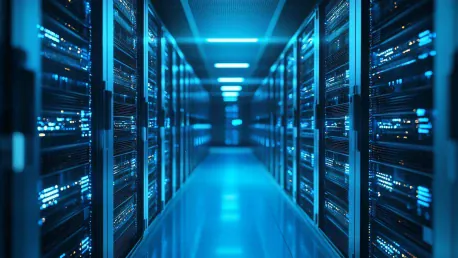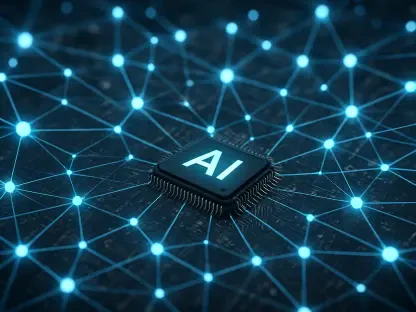The landscape of data storage and analytics is on the brink of a transformative shift, driven by advancements in artificial intelligence (AI) and innovative storage technologies. As we approach 2025, industry experts predict significant changes that will redefine how data is stored, managed, and analyzed. This article delves into the anticipated trends and innovations that will shape the future of data storage, offering insights from IT leaders and industry insiders.
AI’s Transformative Role in Data Storage
AI-Driven Optimization and Efficiency
Artificial Intelligence is set to revolutionize data storage by enhancing efficiency and optimizing resource utilization. AI-powered solutions will become integral in managing storage systems, ensuring optimal performance, and reducing operational costs. Machine learning algorithms will play a crucial role in data placement, access management, and predictive maintenance, leading to more reliable and efficient storage infrastructures.
AI will enable real-time analysis of data storage patterns, allowing for dynamic optimization. For example, AI-driven solutions can automatically adjust storage resources based on current usage, resulting in better allocation and reduced wastage. Storage systems will no longer require manual intervention for configuration or maintenance, as AI systems will proactively identify and resolve potential issues. This transformation means that IT teams can focus on strategic initiatives rather than routine operational tasks.
Enhancing Data Quality and Security
AI will also significantly impact data quality and security. Advanced AI algorithms will be employed to detect anomalies, prevent data breaches, and ensure data integrity. AI-driven threat detection systems will proactively identify and mitigate security risks, transforming storage systems into robust defense mechanisms. Additionally, AI will enhance data governance by automating compliance and privacy management, ensuring adherence to regulatory standards.
Through continuous monitoring and learning, AI systems will become adept at recognizing patterns associated with malicious activities, thereby minimizing the risk of data breaches. By integrating AI with existing security protocols, organizations can create a multi-layered defense strategy, enhancing overall data protection. Furthermore, automated compliance tools will significantly reduce the timelines and costs associated with audits and regulatory reporting. This comprehensive approach to security and governance ensures that data remains both secure and accessible.
Innovations in Storage Technologies
Emergence of Storage-Class Memory (SCM)
Storage-Class Memory (SCM) is poised to bridge the gap between traditional SSDs and DRAM, offering faster data access and improved performance. SCM will enable quicker data retrieval and processing, making it ideal for high-performance applications. This technology will play a pivotal role in meeting the growing demands of AI workloads and real-time analytics, providing a seamless and efficient storage solution.
The adoption of SCM will address latency issues that currently hinder performance in data-intensive applications. By offering performance characteristics closer to DRAM with the persistence of flash storage, SCM becomes a game-changer for scenarios requiring rapid data access. Whether in financial transactions, real-time analytics, or AI model training, SCM will ensure that data is readily available, thus enhancing productivity and responsiveness.
Future Prospects: DNA and Quantum Storage
While still in the research phase, DNA data storage and quantum storage hold immense potential for the future. DNA storage promises unprecedented data density and longevity, while quantum storage could revolutionize data processing speeds and security. These cutting-edge technologies, though not yet mainstream, hint at the possibilities that lie ahead in the realm of data storage.
DNA storage, inspired by the biological storage medium, could store vast amounts of data compactly. Researchers are exploring ways to encode binary data into DNA sequences, potentially allowing for storage capacities that far exceed current technologies. Quantum storage, leveraging principles of quantum mechanics, offers not only exponential increases in processing speeds but also unparalleled security features inherent to quantum states. As these technologies advance, they might redefine the foundational principles of data storage and retrieval, pushing the boundaries of what is technologically feasible.
Data Localization and Edge Computing
Importance of Data Localization
Data localization will gain prominence due to stricter regulations and the increasing need for data sovereignty. Storing data closer to its source will ensure compliance with local laws and enhance data security. This trend will be particularly significant for industries dealing with sensitive information, such as healthcare and finance, where data privacy is paramount.
By adhering to data localization mandates, organizations can avoid legal complications and ensure the trust of their customers. Localized data storage allows for quicker data retrieval and reduced latency, essential for applications requiring timely access to information. Moreover, in the event of cyberattacks, having data stored locally provides an added layer of security by limiting exposure and potential attack vectors.
Rise of Edge Computing
Edge computing will become essential for real-time data processing and analytics. By storing and processing data at the edge of the network, closer to where it is generated, organizations can reduce latency and improve response times. This approach will be crucial for emerging technologies like self-driving cars, smart homes, and IoT devices, which require instantaneous data processing and decision-making.
With edge computing, data doesn’t have to travel to a central server for processing, thereby reducing the lag time. This is particularly important for applications that rely on real-time data and immediate actions, such as autonomous vehicles needing to make split-second decisions. Additionally, edge computing will alleviate the burden on centralized data centers, leading to better load management and resource allocation. As more devices become interconnected, the importance of decentralized processing will grow, making edge computing a cornerstone of future data architectures.
Energy-Efficient Storage Solutions
Balancing Performance and Energy Consumption
As AI workloads increase, so will the energy demands of data storage systems. There will be a concerted effort to develop scalable, low-power storage solutions that balance high-performance access with energy efficiency. Organizations will focus on minimizing energy consumption and operational costs while maintaining optimal performance levels.
Innovations in storage technology are likely to spearhead this effort, with new materials and designs aimed at reducing power usage. AI algorithms will be employed to dynamically manage power distribution and storage utilization, turning off or throttling non-essential systems during low-demand periods. Such strategies not only decrease operating costs but also contribute to broader environmental sustainability goals, aligning with global efforts to reduce carbon footprints.
Innovations in Cold Storage
Efficient cold storage solutions will become vital for managing large volumes of infrequently accessed data. By optimizing cold storage systems, organizations can reduce energy consumption and costs associated with long-term data retention. AI-driven algorithms will play a key role in managing data lifecycle and storage tiering, ensuring efficient utilization of storage resources.
Cold storage refers to systems designed for data that does not require frequent access, such as archival information or backups. These systems ensure that storage resources are used most effectively, allocating high-speed, energy-intensive resources only when necessary. Automated tiering will move data between different types of storage based on usage patterns, optimizing both performance and cost. This targeted approach ensures that organizations can manage ballooning data volumes without incurring prohibitive energy costs or compromising access efficiency.
Hybrid and Versatile Storage Systems
Hybrid Arrays and Multifunctional Systems
Hybrid storage systems that combine flash and spinning disk technologies will become increasingly popular. These systems offer the best of both worlds, providing high-speed access for frequently used data and cost-effective storage for less critical information. Multifunctional storage systems will cater to diverse use cases, offering flexibility and robust data management options.
The appeal of hybrid solutions lies in their ability to balance performance and cost. Flash storage, known for its speed, can handle high-demand applications, while traditional spinning disks offer a cheaper solution for bulk data storage. This versatility allows organizations to tailor their storage infrastructure to meet specific requirements, enhancing overall efficiency and cost-effectiveness. Multifunctional systems, too, will evolve with enhanced features such as built-in data recovery, automated backups, and cloud integration, providing a comprehensive solution for modern data management challenges.
Adapting to Evolving Needs
Versatile storage systems will be essential for adapting to the evolving needs of businesses. As data types and workloads change, storage infrastructures must be able to scale and accommodate new requirements. Future-proofing storage systems will involve investing in technologies that offer scalability, flexibility, and robust data management capabilities.
Organizations will increasingly seek storage solutions that can easily integrate with evolving technologies like AI, big data, and blockchain. Modularity in storage solutions will allow for easy upgrades and expansions, ensuring that the infrastructure remains relevant and efficient. Additionally, adaptable storage systems will support various data management strategies, such as hybrid cloud deployments and distributed storage networks, thus offering resilience and redundancy crucial for uninterrupted business operations. This preparedness to handle evolving data landscapes will be the hallmark of future-ready storage systems.
Data Governance and Security
Emphasis on Data Governance
Data governance will take center stage as organizations strive to ensure data privacy, compliance, and security. Effective data governance frameworks will be crucial for managing data quality, access controls, and regulatory compliance. AI-driven automation will streamline governance processes, reducing the burden on IT teams and ensuring consistent adherence to policies.
A robust data governance strategy will involve comprehensive policies and procedures that dictate how data is managed, accessed, and secured. This will not only cover regulatory compliance but also internal policies that ensure data integrity and responsible usage. Automated solutions will aid in maintaining up-to-date records of data access and modifications, providing transparency and accountability. Furthermore, AI will assist in real-time compliance monitoring, quickly flagging any deviations from set standards and thus limiting potential risks.
Advanced Security Measures
The rise of cyberstorage will transform storage systems into proactive defense mechanisms. Advanced security measures, such as AI-driven threat detection and immutable backups, will protect data from breaches and ransomware attacks. Organizations will prioritize security features that offer real-time monitoring, anomaly detection, and rapid response capabilities.
Security paradigms will shift from reactive to proactive, with AI systems constantly scanning for vulnerabilities and unusual activity patterns. Immutable backups will ensure data recovery capabilities, even in the case of successful cyber attacks, by creating unalterable copies of data. Real-time monitoring will provide instant alerts and automated responses, significantly reducing the time window available for any potential breach. These advanced security measures will be instrumental in building resilient data storage infrastructures that can withstand increasingly sophisticated cyber threats.
Scalable and Future-Proof Storage
Investing in Scalable Solutions
By 2025, we can expect AI to become integral in handling vast amounts of data more efficiently, enabling quicker, more accurate analytics. Innovative storage technologies like quantum storage and DNA data storage are also expected to come to the forefront, promising vastly greater capacities and durability than current solutions.
Hybrid Storage Solutions
Hybrid storage systems that combine flash and spinning disk technologies will become increasingly popular. These systems offer the best of both worlds, providing high-speed access for frequently used data and cost-effective storage for less-critical information. Multifunctional storage systems will cater to diverse use cases, offering flexibility and robust data management options.
Future Prospects
Moreover, edge computing is anticipated to rise in prominence, allowing for data processing closer to where it is generated, reducing latency and bandwidth usage. Cloud storage solutions will continue to evolve, offering more secure and seamless integration with other technologies. As these advancements unfold, businesses and individuals must adapt to new paradigms in data management. Staying informed about these trends will be crucial for leveraging the full potential of future data storage innovations.









